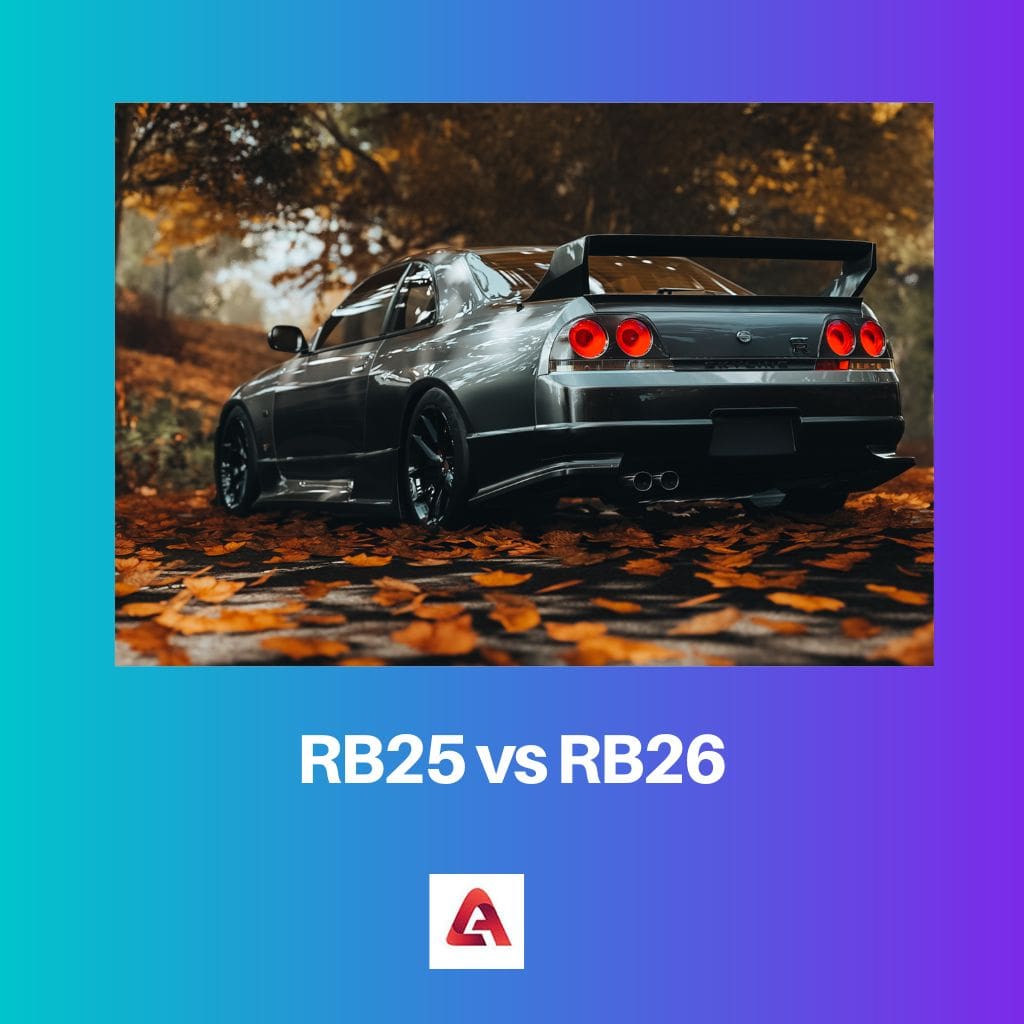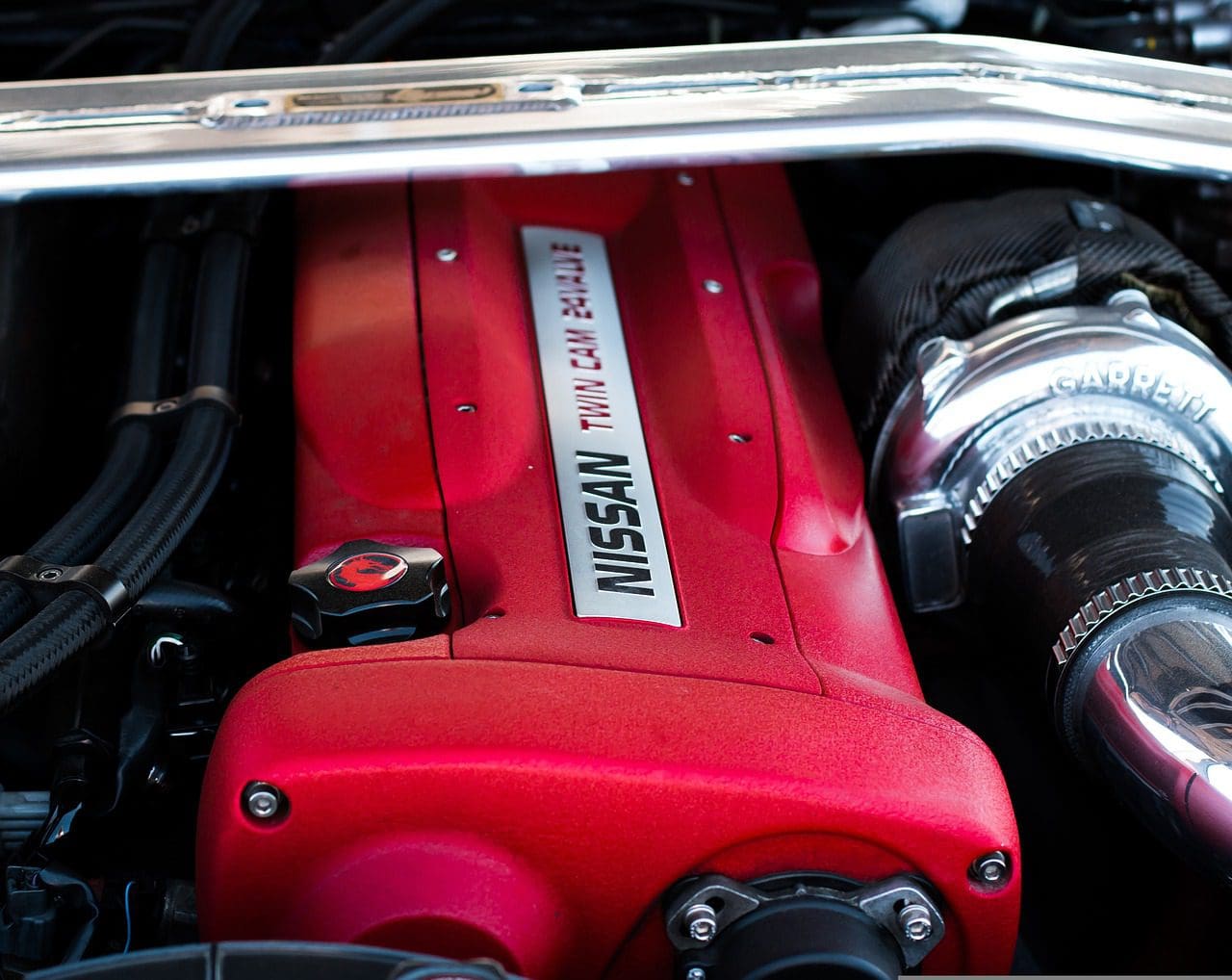While RB26 is a much more powerful version- owing to the numerous electrical, mechanical, and technical improvements incorporated into this version. The 2.6 L RB26 engine operates at an enhanced power capacity of 280 PS at 6,800 rpm and a torque of 353 N.m at 4000 rpm.
Key Takeaways
- RB25 and RB26 are two engine models produced by Nissan for use in their Skyline GT-R cars.
- RB25 is a 2.5-litre, six-cylinder engine with a single turbocharger, producing around 300 horsepower; RB26 is a 2.6-litre, six-cylinder engine with twin turbochargers, producing around 330 horsepower.
- RB25 was used in earlier Skyline models, while RB26 was used in later generations, including the iconic R32, R33, and R34 GT-Rs.
RB25 vs RB26
The RB25 engine is a 2.5-liter inline-six-cylinder engine; it has a dual overhead camshaft (DOHC) configuration and is available in both naturally aspirated and turbocharged versions. The RB26 engine is a 2.6-liter inline-six-cylinder engine; it also has a DOHC configuration and is turbocharged.

Comparison Table
| Parameters of Comparison | RB25 | RB26 |
|---|---|---|
| Power Capacity | RB25 engines operate at a power capacity of 182-203 PS at 6000 rpm and a torque of 255 N.m at 4000 rpm. | RB26 engines operate at a power capacity of 280 PS at 6,800 rpm and a torque of 353 N.m at 4000 rpm. |
| Engine Capacity | 2.5 L engine capacity with a stroke of 71.7 mm. | 2.6 L engine capacity and a stroke of 73.7 mm. |
| Lifters | Hydraulic lifters. | Solid lifters. |
| Throttle Bodies | Single throttle body. | Six throttle body. |
| Turbo Power | Non-turbo (initial version) | Twin turbo-powered engine. |
| Cost | Lower than RB26 engines. | Higher than RB25 engines. |
What is RB25?
RB25 engines were introduced by Nissan in 1993 as a part of its coveted RB series, specifically for the Nissan Skyline GTST R33. The RB25 engine was an improvement over its RB20DET predecessor.
This new range featured 2.5 L, 2498cc engines and witnessed several improvements rolled out in the subsequent years.
Thus, the new model improved the power capacity of its predecessor at a lower rpm.
The update for the RB25 engine was launched in 1995 when Nissan announced the release of series 2 RB25DET engines in this range. The update featured an advanced turbocharger and electric system.
Finally, in 1998 the RB25DET NEO was introduced with further revisions specifically for Nissan Skyline R34.

What is RB26?
The RB26 engines were in wide circulation from 1998-2002. The RB26DETT line featured 2.6 L inline-six engines.
The RB26 DETT engine is entitled as the king of engines in the Nissan RB engine range. Implementing T-25 ceramic turbochargers, the engine has a twin-turbo system.
The highest recorded power level post-production was 280 PS at 6,800 rpm and a torque of 353 N.m at 4000 rpm.
Recently Nissan announced its decision to resume production of the RB26 engines.

Main Differences Between RB25 and RB26
- The main difference between RB25 and RB26 is in terms of the power capacity of each engine version. The former has a capacity of 182-203 PS at 6000 rpm and a torque of 255 N.m at 4000 rpm. While the latter operates at a capacity of 280 PS at 6,800 rpm and a torque of 353 N.m at 4000 rpm.
- The former version boosts a 2.5L engine capacity with a stroke of 71.7 mm. The latter is empowered by a 2.6 L engine capacity and a stroke of 73.7 mm. This makes the RB26 version more powerful than the RB25 model.

The comparisons drawn between RB25 and RB26 engines provide valuable insights into Nissan’s engineering innovations and power capacity advancements.
The details about the RB25 and RB26 engines’ features and history make it clear why these engines are so highly regarded among automotive enthusiasts.
Absolutely! The RB series engines’ legacy and technological advancements are truly remarkable.
The information about the RB26 engine’s power and torque performance is truly impressive. Nissan’s decision to resume production of the RB26 engines is certainly exciting news for automotive enthusiasts.
Absolutely, the RB26’s power and torque figures are exceptional, and the announcement of its future production is a noteworthy development.
Indeed, the RB26’s prowess and the decision to resume production reflect Nissan’s commitment to high-performance automotive engineering.
Interesting to learn about the enhancements made in the RB25DET NEO, particularly the advancements in the turbocharger and electrical system. It’s a step forward in engine evolution.
Indeed, Nissan’s continuous improvements in the RB series engines are remarkable. The RB25DET NEO brought significant upgrades to the range.
The comparison table clearly illustrates how the RB26’s specifications outshine those of the RB25. It’s a testament to Nissan’s engineering prowess.
Absolutely! Nissan’s dedication to innovation and power enhancement in automotive engines is impressive.
The RB25 and RB26 engines’ differences are well-explained, making it an insightful read for anyone interested in automotive engineering.
Absolutely, the article provides a clear understanding of the RB series engines’ key distinctions and technological advancements.
Indeed, the deep dive into the RB series engines’ specifications and features is very educational and engaging.
I must say, the performance of the RB26 engine really stands out compared to the RB25. The power output and torque increase are quite impressive.
Absolutely, the technical improvements in the RB26 engine make it a powerhouse, especially with the twin turbochargers.
RB26’s twin turbo system puts it on a whole different level. The power and torque figures justify its reputation as the ‘king of engines’.
Indeed, RB26’s twin-turbo setup is a game-changer and significantly elevates the engine’s performance.
Great summary of the main differences between RB25 and RB26 engines. The comparison table is very informative and shows the key features that set these two engine models apart.
I completely agree! The detailed power and capacity specifications provided are very helpful for anyone interested in the RB series engines.
This engine comparison provides a comprehensive overview of the RB25 and RB26 models. The technical details are presented concisely and informatively.